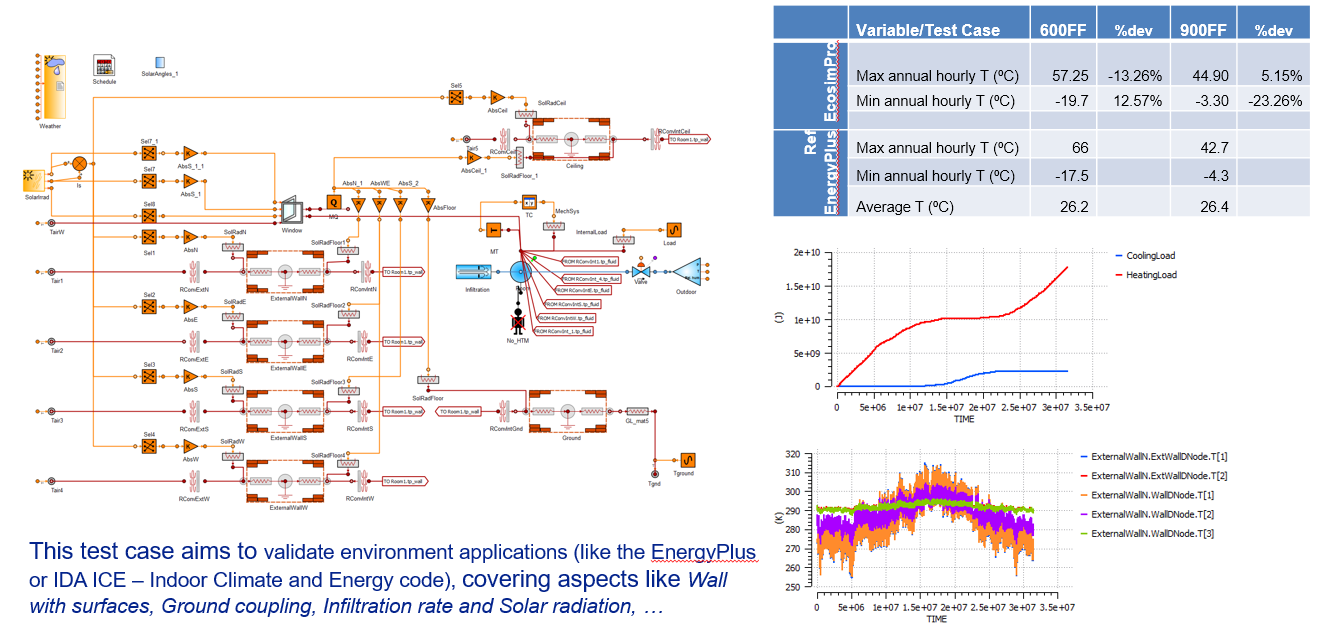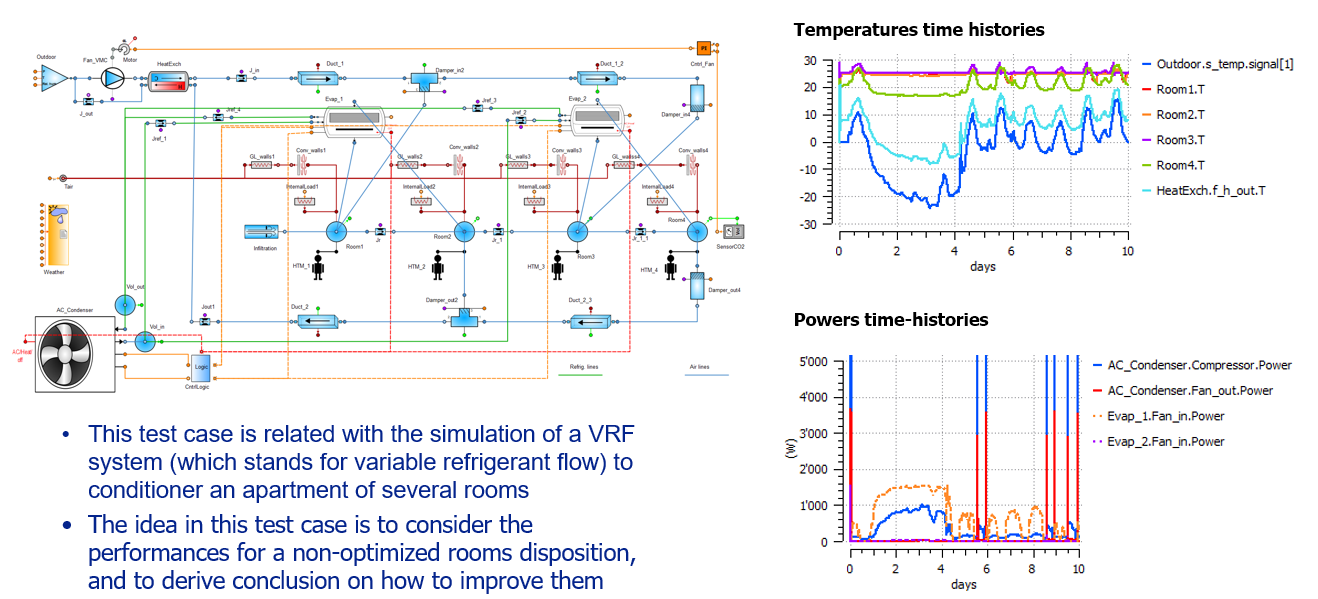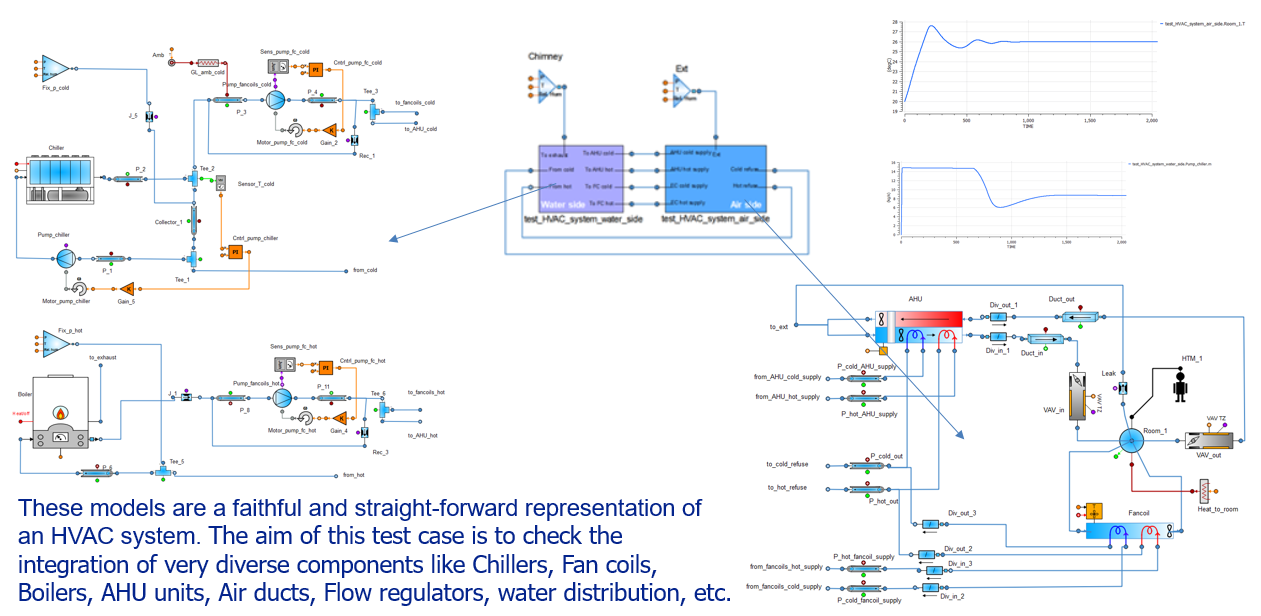HVAC - Simulation of Heating, Ventilation, and AC of buildings
Last Releases
3.0.0, February 2024
2.1.0, February 2022
1.0.0, October 2020
Status
Commercial toolkit, available for sale and project development
Applications
Modelling HVAC systems—water piping and air ductwork, human thermal and breathing models, relative humidity and CO2 concentration, heat losses of buildings, weather conditions, radiation—and bundling them into stand-alone applications:
- Creation of digital twins of buildings (Building Performance Simulation).
- Implementation of predictive control in SCADA systems.
- Analyzing devices in smart grids.
- Exportation of models to software-in-the-loop.
- Full design and sizing of equipment, air ductwork, water piping including control.
Description
The aim of the HVAC toolkit is to place people at the center of the design of the heating, cooling and ventilation systems. To do that, this software allows the transient simulation of fluid systems (mixture of gases plus one vaporizing liquid), combustion processes, performances analysis of HVAC systems combined with the modelling of buildings and rooms occupation (Building Performance Simulation). Furthermore, it takes into account the whole complexity of buildings and weather by accounting for solar radiation, wall capacitance and ground losses, amongst other phenomena.
The HVAC library provides a palette of components and application examples. The same component can work under liquid, gas or two-phase conditions. Here are the available components:
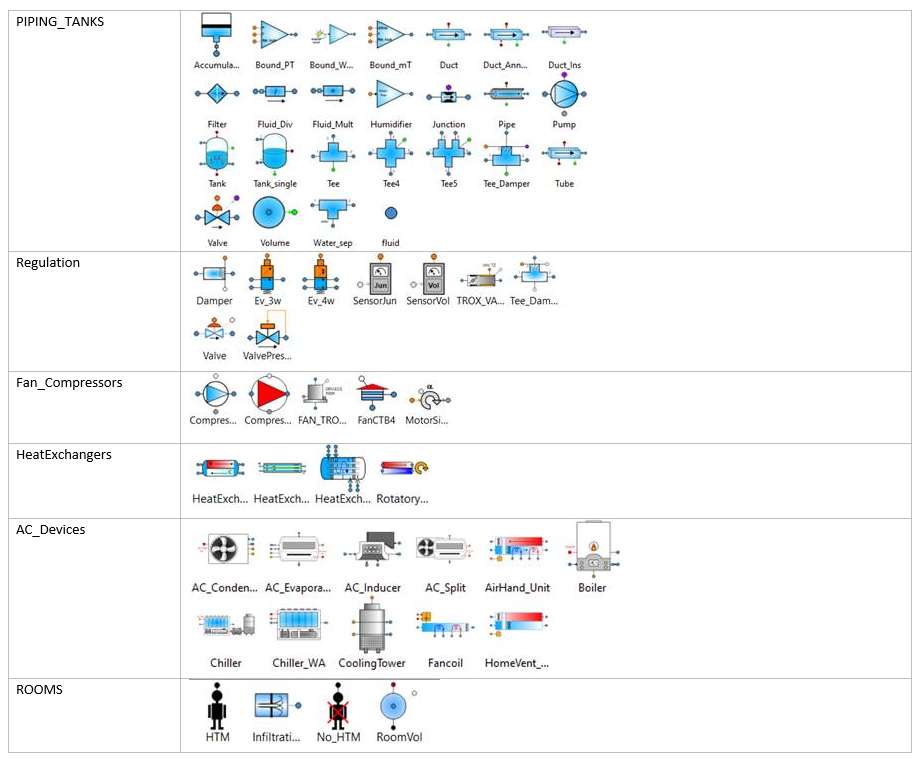
HVAC provides the components for the typical basic elements used in air conditioning systems such as:
- Rooms, fluid volumes, junctions (also simulating doors) and human thermal models (HTM)
- Pipes, ducts, tees, collectors, splitters, humidifiers, etc.
- Heat-exchangers
- Air flow regulators and dampers, 3- and 4-way control valves, pressure regulators, etc.
- Pump, fan and compressor components are provided with user-defined or generic performance maps.
HVAC also has macro-components for the typical air conditioning machines such as:
- Chillers
- Air Handling Units
- Splitters, condensers, evaporators, fan-coils
- Boilers calculating the composition of burnt gases
The systems in which air conditioning devices are coupled with ventilation networks, wall heat transfer and control loops will be physically evaluated with HVAC. In addition, HVAC allows analyzing transient aspects due to fluid inertia, wall friction and heat transfer.
As part of this modeling toolkit, software is included that is capable of interpreting a BIM model in IFC format and converting or translating the desired HVAC parts into a schematic in EcosimPro.

The software for translating an IFC file to an EcosimPro schematic aims to select those HVAC parts that the user considers relevant, extract their data and properties and, finally, create in EcosimPro a schematic that will be an initial approximation to the model of that HVAC system from the IFC file:
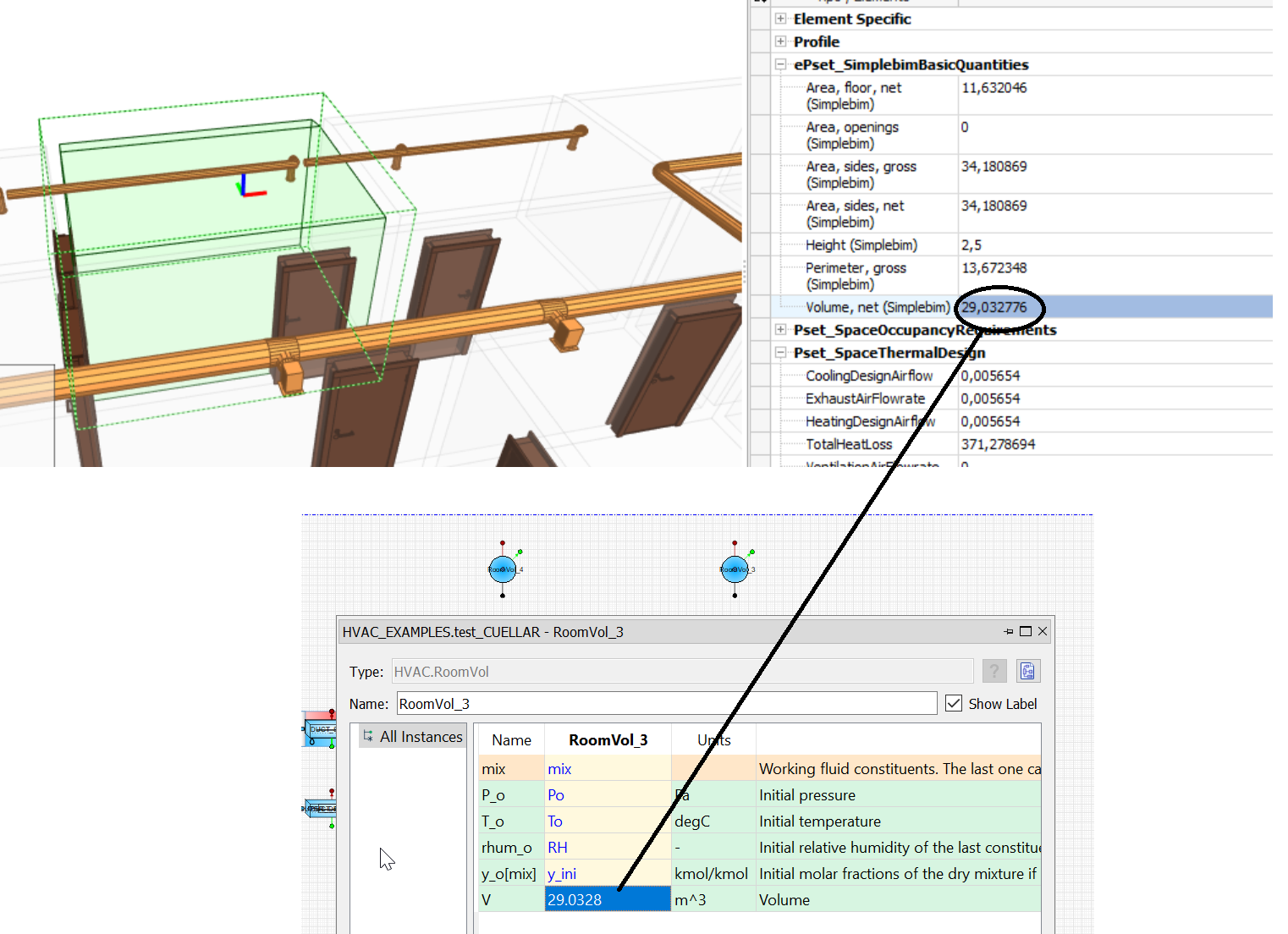
Once the schematic is created, the modeler/user can build, edit and add components, connections or any data he or she considers relevant.
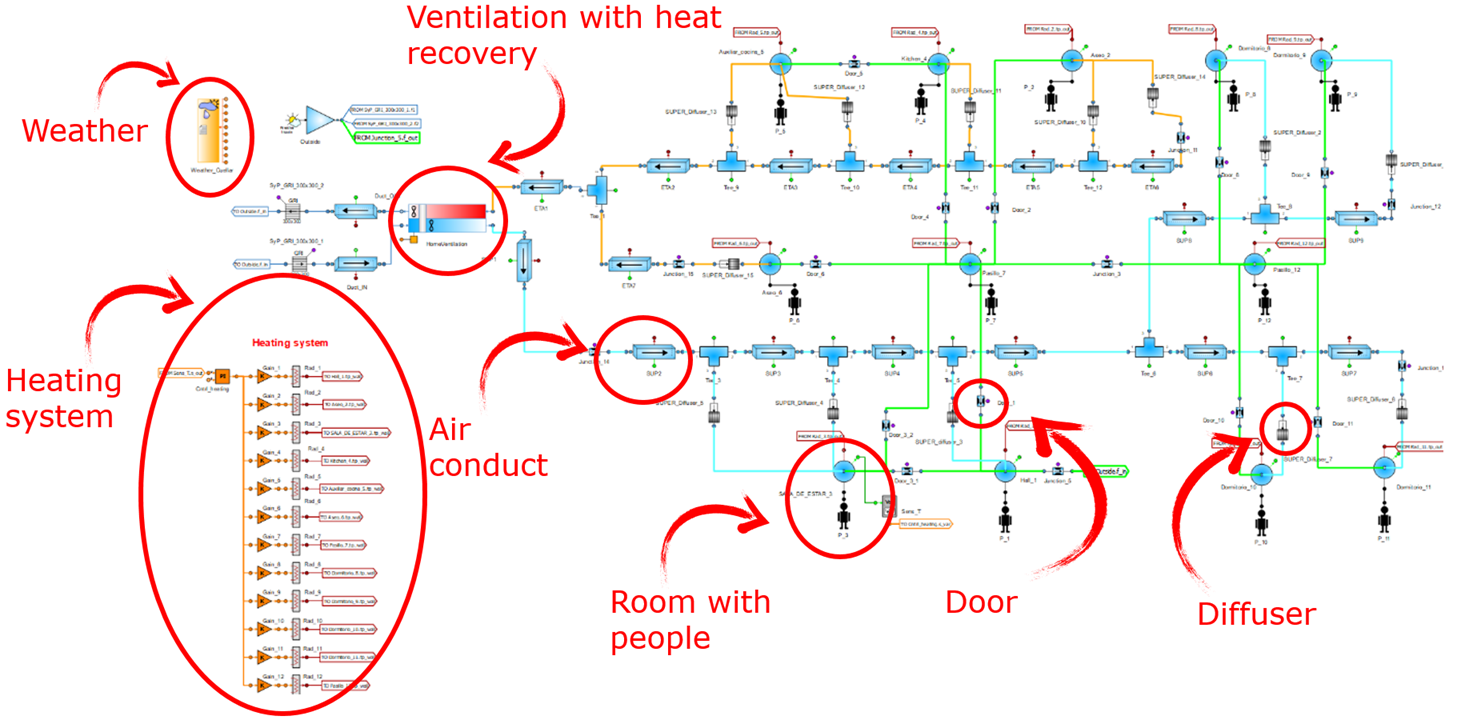
System topologies are built by just linking the components as they are in real life. The tool is open to complex topologies and systems that can be easily replicated to larger models. Some examples are presented below.
Room validation
The next test case shows how to quantify all the energy required to keep a room at a certain temperature setpoint throughout a whole year.
